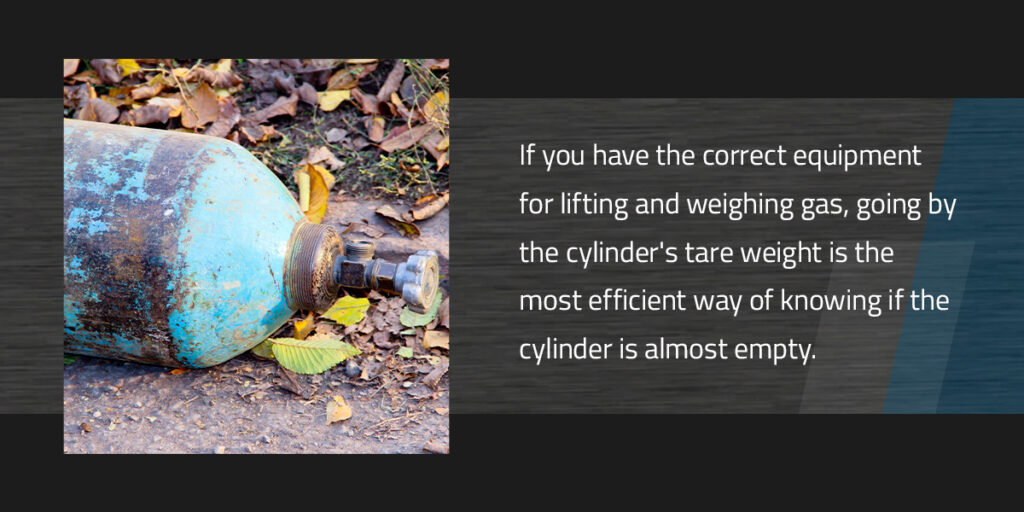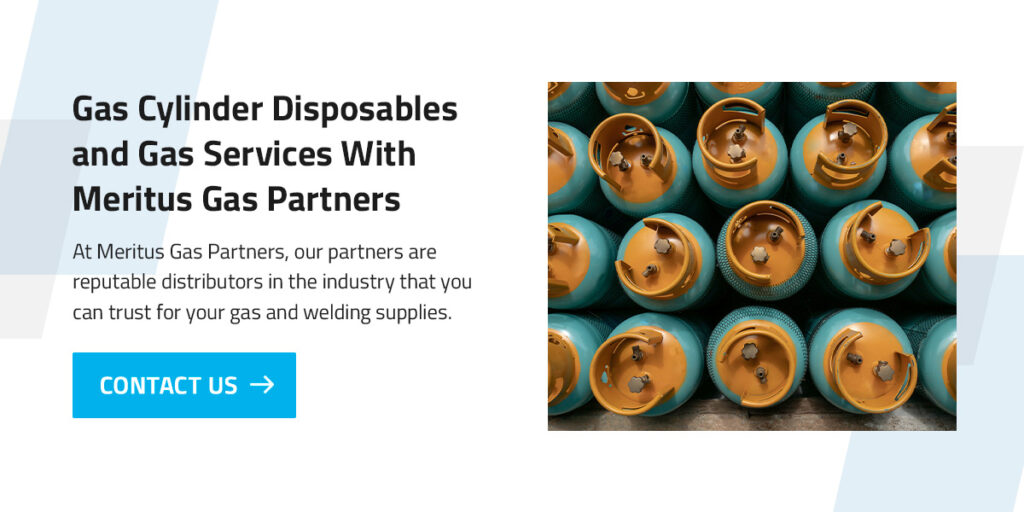

Gas has unique properties that make it versatile and practical for many applications, but these same unique properties mean you have to be careful when you work with gas. Improper disposable of gas cylinders poses a significant risk to the health and safety of people, animals, property and the environment. You can take steps to ensure your business discards empty gas cylinders safely.
There are many practical, economic, environmental and ethical reasons to properly dispose of gas cylinders.
Safety is at the top of the list — for you, the surrounding public and neighboring property. Incorrect disposable methods are hazardous and can lead to explosions or leaks that can be dangerous to people and natural resources or cause severe property damage. Implementing proper disposal methods shows your business practices are ethical and your business is reliable, responsible and conscientious — all of which are excellent for your business’s reputation.
Safe disposal benefits the environment by reducing the impact gas and gas cylinders can have on your surroundings. If not disposed of properly, gas cylinders can end up in landfills, posing a risk to water and soil. Additionally, most cylinders are made from materials that can take years to decompose. Discarding cylinders correctly can also help reduce unnecessary costs. Improper methods may lead to potential liabilities, including fines and penalties.

Gas cylinders are specialized equipment, so understanding the markings on cylinders is important for safety. Generally, manufacturers will mark gas cylinders with the following information:
It is essential to follow all safety guidelines when handling cylinders regardless of the type of cylinder, gas, application or other factors:

If you have the correct equipment for lifting and weighing gas, going by the cylinder’s tare weight is the most efficient way of knowing if the cylinder is almost empty.
All cylinders have a disk showing the tare weight, which is the weight of the cylinder when it is entirely empty. You can carefully place the cylinder on a scale and calculate how much gas is left by subtracting the tare weight from the cylinder’s current weight.
Another method involves pouring warm water down the side of the cylinder:
A cylinder with signs of damage or wear can pose a safety risk. You can always contact the manufacturer if your cylinder is defective.
Check for these signs of a defect:
You can also test for acetylene leaks by following these steps:
You can also follow this procedure to test for oxygen leaks. If leaks persist, contact the manufacturer for a replacement.

Improperly discarded containers are a safety hazard, as they may explode, and the contents of cylinders can be toxic and contaminate water and soil. The best approach to disposing of your gas containers is to recycle them, which can create a more positive impact on the environment. You can establish a recycling program by contacting your local recycling facility to discuss if they recycle gas cylinders.
If everything is in order, the recycling facility will make arrangements to collect your gas cylinders and then dispose of them. Some facilities are also equipped to recycle gas cylinders with some gas left in them, so be sure to locate a facility that does this if applicable to your needs. If your local recycling facility does not take gas cylinders, you may be able to work with a scrap metal recycling company to achieve the same result.
If your business operates in a state that classifies gas cylinders as hazardous waste, you should consider hiring an environmental consultant. The consultant can help you find recycling facilities that deal in commercial hazardous waste and provide other guidance to ensure you dispose of your cylinders correctly.
It’s important to note that if you’re unsure of what materials are in a gas cylinder, you must treat it as if the cylinder contains the most hazardous gas you work with at your facility. In some cases, you can work with a disposal facility to determine what the cylinder contains.
Facilities may vary slightly in their requirements for preparing gas cylinders for recycling, but you can generally incorporate the following steps into your preparations:
In the case that your gas cylinder is damaged or leaking, you likely won’t be able to recycle it. If you come across this situation, contact the cylinder’s manufacturer to discuss next steps.
Gas suppliers often have exchange programs in place. You can always speak to your supplier when purchasing gas and ask about the terms and conditions of their exchange program. These programs allow you to exchange cylinders for a like-for-like replacement.
These programs ensure safety, as they can eliminate the need for you to dispose of empty gas cylinders by yourself. You can often contact your supplier and arrange for them to collect empty cylinders or those you no longer need. The supplier will have procedures in place for reusing and recycling unwanted cylinders.

Following approved methods for compressed gas cylinder disposal should be standard practice in your business for your and your staff’s safety. You can contact your gas supplier or a recycling facility to set up a return or exchange program and integrate the relevant disposal process into your business’s procedures.
At Meritus Gas Partners, our partners are reputable distributors in the industry that you can trust for your gas and welding supplies. Each of our partner businesses provides top-quality gas and welding solutions that streamline your operations with the supplies, equipment, services and support you need. You can count on efficient and reliable service from a partner near you.
Feel free to visit any of our branches or contact us today with any questions.